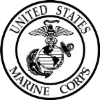Available 24/7
Professional Instruction
Free Training Materials






Course Details
Section 1: Configuring and Troubleshooting Domain Name System
This section covers how to configure and troubleshoot DNS, including DNS replication and caching.
Topics
?Configuring the DNS Server Role
?Configuring DNS Zones
?Configuring DNS Zone Transfers
?Managing and Troubleshooting DNS
Lab 1: Configuring and Troubleshooting DNS
?Configuring DNS Resource Records
?Configuring DNS Conditional Forwarding
?Installing and Configuring DNS Zones
?Troubleshooting DNS
Section 2: Maintaining Active Directory Domain Services
This section covers how to implement virtualized domain controllers and read-only domain controller (RODCs). Additionally, it covers how to perform common AD DS administrative tasks
and manage the AD DS Database.
Topics
?Overview of AD DS
?Implementing Virtualized Domain Controllers
?Implementing RODCs
?Administering AD DS
?Managing the AD DS Database
Lab 1: Maintaining AD DS
?Installing and Configuring a RODC
?Configuring AD DS Snapshots
?Configuring the Active Directory Recycle Bin
?Optional Exercise- Cloning a domain controller
Section 3: Managing User and Service Accounts
This section covers how to create, configure and automate the creation of user accounts. Additionally, it covers how to configure account-related properties of user objects. It further covers how to create and administer Managed Service Accounts.
Topics
?Configuring Password Policy and User Account Lockout Settings
?Configuring Managed Service Accounts
Lab 1: Managing User and Service Accounts
?Configuring Password Policy and Account Lockout Settings
?Creating and Associating a Managed Service Account
Section 4: Implementing a Group Policy Infrastructure
This section covers how to implement a GPO infrastructure. This also teaches how to perform common GPO management tasks, and manage GPOs by using Windows PowerShell. Additionally, it focuses on troubleshooting the application of GPOs.
Topics
?Introducing Group Policy
?Implementing and Administering GPOs
?Group Policy Scope and Group Policy Processing
?Troubleshooting the Application of GPOs
Lab 1: Implementing a Group Policy Infrastructure
?Creating and Configuring Group Policy Objects
?Managing GPO Scope
?Verify GPO Application
?Managing GPOs
Section 5: Managing User Desktops with Group Policy
This section covers how you can use Group Policy Objects (GPOs) to implement desktop environments across your organization by using Administrative Templates, Folder Redirection, Group Policy preferences, and where applicable, use software deployment to install and update application programs. It is important to know how to use these various GPO features so that you can configure your users? computer settings properly.
Topics
?Implementing Administrative Templates
?Configuring Folder Redirection and Scripts
?Configuring Group Policy Preferences
?Managing Software with Group Policy
Lab 1: Managing User Desktops with Group Policy
?Implement Settings by Using Group Policy Preferences
?Managing Office 2013 by using Administrative Templates
?Deploying Software by using Group Policy
?Configuring Folder Redirection
Section 6: Installing, Configuring, and Troubleshooting the Network Policy Server Role
This section covers how to install and configure NPS, RADIUS Clients and servers. Additionally, it describes NPS authentication methods. It describe NPS authentication methods and how to
monitor and troubleshoot NPS.
Topics
?Installing and Configuring a Network Policy Server
?Configuring RADIUS Clients and Servers
?NPS Authentication Methods
?Monitoring and Troubleshooting a Network Policy Server
Lab 1: Installing and Configuring a Network Policy Server
?Installing and Configuring NPS to Support RADIUS
?Configuring and Testing a RADIUS Client
Section 7: Implementing Network Access Protection
This section covers how to configure, monitor, and troubleshoot NAP. Additionally, it covers how NAP can help to protect your network and the various NAP enforcement processes.
Topics
?Overview of Network Access Protection
?Overview of NAP Enforcement Processes
?Configuring NAP
?Configuring IPSec Enforcement for NAP
?Monitoring and Troubleshooting NAP
Lab 1: Implementing Network Access Protection
?Configuring NAP Components
?Configuring Virtual Private Network Access
?Configuring the Client Settings to Support NAP
Section 8: Implementing Remote Access
In this section, you will learn how to implement and manage remote access in Windows Server 2012. You will also learn how to implement DirectAccess by using the Getting Started wizard, implement and manage an advanced DirectAccess infrastructure, and implement VPN.
Topics
?Overview of Remote Access
?Implementing DirectAccess by Using the Getting Started Wizard
?Implementing and Managing an Advanced DirectAccess Infrastructure
?Implementing VPN
?Implementing Web Application Proxy
Lab 1: Implementing DirectAccess by Using the Getting Started Wizard
?Verifying Readiness for a DirectAccess Deployment
?Configuring DirectAccess
?Validating the DirectAccess Deployment
Lab 2: Deploying an Advanced DirectAccess Solution
?Preparing the Environment for DirectAccess
?Implementing the Advanced DirectAccess Infrastructure
?Validating the DirectAccess Deployment
Lab 3: Implementing VPN
?Implementing VPN
?Validating the VPN Deployment
Lab 4: Implementing Web Application Proxy
?Implementing Web Application Proxy
?Validating the Web Application Proxy Deployment
Section 9: Optimizing File Services
This section describes FSRM, configure quotas, file screening, and storage reports and implement classification management and file management tasks. It describes the components of the DFS. I also covers how to configure DFS namespaces and DFS replication.
Topics
?Overview of FSRM
?Using FSRM to Manage Quotas, File Screens, and Storage Reports
?Implementing Classification and File Management Tasks
?Overview of DFS
?Configuring DFS Namespaces
?Configuring and Troubleshooting DFS Replication
Lab 1: Configuring Quotas and File Screening Using File Server Resource Manager
?Configuring File Server Resource Manager Quotas
?Configuring File Screening and Storage Reports
Lab 2: Implementing Distributed File System
?Installing the DFS role service
?Configuring a DFS Namespace
?Configuring DFS Replication
Section 10: Configuring Encryption and Advanced Auditing
This section covers how to encrypt files using EFS and configure advanced auditing features.
Topics
?Encrypting Drives by Using BitLocker
?Encrypting Files by Using EFS
?Configuring Advanced Auditing
Lab 1: Configuring Encryption and Advanced Auditing
?Using Windows BitLocker Drive Encryption to Secure Data Drives
?Encrypting and Recovering Files
?Configuring Advanced Auditing
Section 11: Deploying and Maintaining Server Images
This section covers how to create and manage server images by using Windows Deployment Services
Topics
?Overview of Windows Deployment Services
?Managing Images
?Implementing Deployment with Windows Deployment Services
?Administering Windows Deployment Services
Lab 1: Using Windows Deployment Services to Deploy Windows Server 2012
?Installing and Configuring Windows Deployment Services
?Creating Operating System Images with Windows Deployment Services
?Configuring Custom Computer Naming
?Deploying Images with Windows Deployment Services
Section 12: Implementing Update Management
This section covers how to use Windows Server Update Services (WSUS) to deploy updates to Windows servers and clients.
Topics
?Overview of WSUS
?Deploying Updates with WSUS
Lab 1: Implementing Update Management
?Implementing the WSUS Server Role
?Configuring Update Settings
?Approving and Deploying an Update by using WSUS
Section 13: Monitoring Windows Server 2012
This section covers the monitoring tools available in Windows Server 2012. Additionally, it covers how to use Performance Monitor and monitor events.
Topics
?Monitoring Tools
?Using Performance Monitor
?Monitoring Event Logs
Lab 1: Monitoring Windows Server 2012
?Establishing a Performance Baseline
?Identifying the Source of a Performance Problem
?Viewing and Configuring Centralized Event Logs
Please check the course description to find prerequisite information.
MOC On-Demand: 20411-Administering Windows Server 2012
On-Demand Training Course
90/month licence
- 24/7 Access
- Hands-On Practice Exercises
- Free Repeats
- Professional Instruction
Testimonials
This was the class I needed.
The instructor Jeff took his time and made sure we understood each topic before moving to the next. He answered all of our questions, and I don't know about the rest of the students, but was very pleased with this experience.
I finally understand how to use Excel.
-Amanda T (Yale New Haven Hospital).
Great class!
We were able to cover a lot of information in one day without getting overwhelmed.
-Maria R (Microsoft).
Free Repeats
Learn At Your Pace
No Travel
Professional Instruction
Affordable Pricing
Group Discounts

